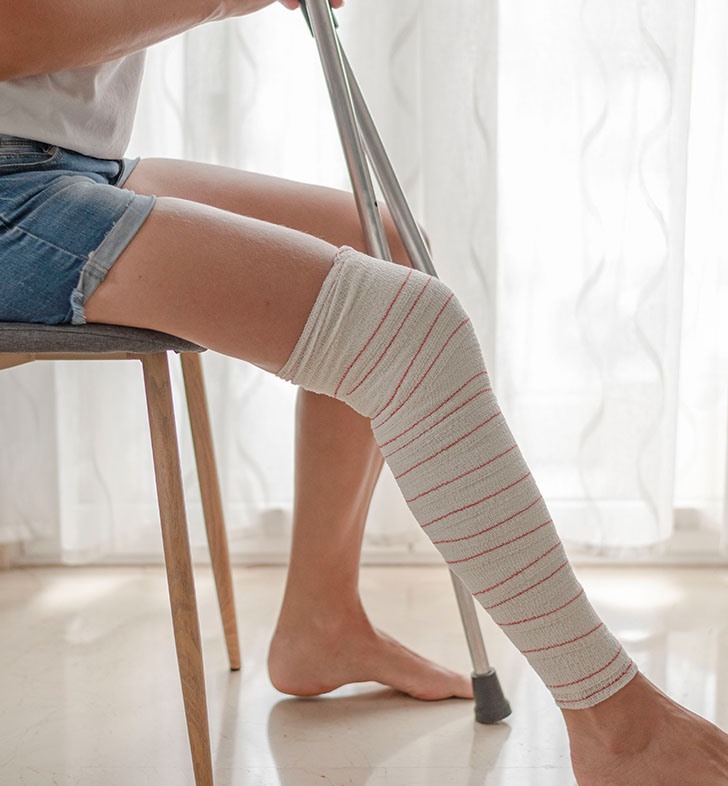
Bone Fractures
Bone fractures vs. sprains
Bone fractures and sprains are
common sports injuries.
If you experience a bone fracture,
you’ve broken one or more of your bones. You can’t sprain a bone. A sprain
happens when one of your ligaments is stretched or torn.
It’s possible to experience a bone
fracture and a ligament sprain during the same injury, especially if you damage
a joint like your knee or elbow.
What are the different types of bone
fractures?
There are many different types of
fractures. Your provider will diagnose a specific fracture type depending on a
few criteria, including its:
· Pattern: A fracture pattern is the medical term
for the shape of a break or what it looks like.
· Cause: Some fractures are classified by how they
happen.
· Body part: Where in your body your broke a bone.
Fractures diagnosed by pattern or
shape
Some fractures are classified by
their pattern. This can either be the direction a break goes (if it’s a
straight light across your bone) or its shape (if it’s more than a single line
break).
Fractures that have a single
straight-line break include:
· Oblique fractures.
· Transverse fractures.
· Longitudinal fractures (breaks that happen along
the length of the bone).
Fracture patterns that don’t break
your bone in a single straight line include:
· Greenstick fractures.
· Comminuted fractures.
· Segmental fractures.
· Spiral fractures.
Fractures diagnosed by cause
A few types of fractures are named
or classified by what causes them. These include:
· Stress fractures (sometimes referred to as
hairline fractures).
· Avulsion fractures.
· Buckle fractures (sometimes referred to as torus
or impacted fractures).
Fractures diagnosed by location
Lots of fractures are specific to
where they happen in your body. In some cases, it’s possible to experience a
location-based fracture that’s also one of the other types listed above. For example,
someone who experiences a severe fall might have a comminuted tibia (shin bone)
fracture.
Fractures that affect people’s
chest, arms and upper body include:
· Clavicle fractures (broken collarbones).
· Shoulder fractures.
· Humerus (upper arm bone) fractures.
· Elbow fractures.
· Rib fractures.
· Compression fractures.
· Facial fractures.
Some fractures that can affect your
hands or wrists include:
· Barton fractures.
· Chauffeur fractures.
· Colles fractures.
· Smith fractures.
· Scaphoid fractures.
· Metacarpal fractures (breaking any of the bones
in your hand that connect your wrist to your fingers).
Fractures that damage the bones in
your lower body and legs include:
· Pelvic fractures.
· Acetabular fractures.
· Hip fractures.
· Femur fractures.
· Patella fractures.
· Growth plate fractures.
· Tibia (your shin bone) and fibula (your calf
bone) fractures.
Fractures that affect your feet and
ankles are more likely to have complications like nonunion. They include:
· Calcaneal stress fractures.
· Fifth metatarsal fractures.
· Jones fractures.
· Lisfranc fractures.
· Talus fractures.
· Trimalleolar fractures.
· Pilon fractures.
Open vs. closed fractures
Your provider will classify your
fracture as either open or closed. If you have an open fracture, your bone
breaks through your skin. Open fractures are sometimes referred to as compound
fractures. Open fractures usually take longer to heal and have an increased
risk of infections and other complications. Closed fractures are still serious,
but your bone doesn’t push through your skin.
Displaced vs. non displaced
fractures
Displaced or non-displaced are more
words your provider will use to describe your fracture. A displaced fracture
means the pieces of your bone moved so much that a gap formed around the
fracture when your bone broke. Non-displaced fractures are still broken bones,
but the pieces weren’t moved far enough during the break to be out of alignment.
Displaced fractures are much more likely to require surgery to repair.
Who gets bone fractures?
Bone fractures can affect anyone.
Because they’re usually caused by traumas like falls, car accidents or sports
injuries, it’s hard to know when someone will break a bone.
You’re more likely to experience a
fracture if your bones are weakened by osteoporosis.
Osteoporosis
Osteoporosis weakens bones, making
them more susceptible to sudden and unexpected fractures. Many people don’t
know they have osteoporosis until after it causes them to break a bone. There
usually aren’t obvious symptoms.
People assigned female at birth and
adults older than 50 have an increased risk for developing osteoporosis. Talk
to your provider about a bone density screening that can catch osteoporosis
before it causes a fracture.
How common are bone fractures?
Bone fractures are a common injury.
Millions of people break a bone every year.